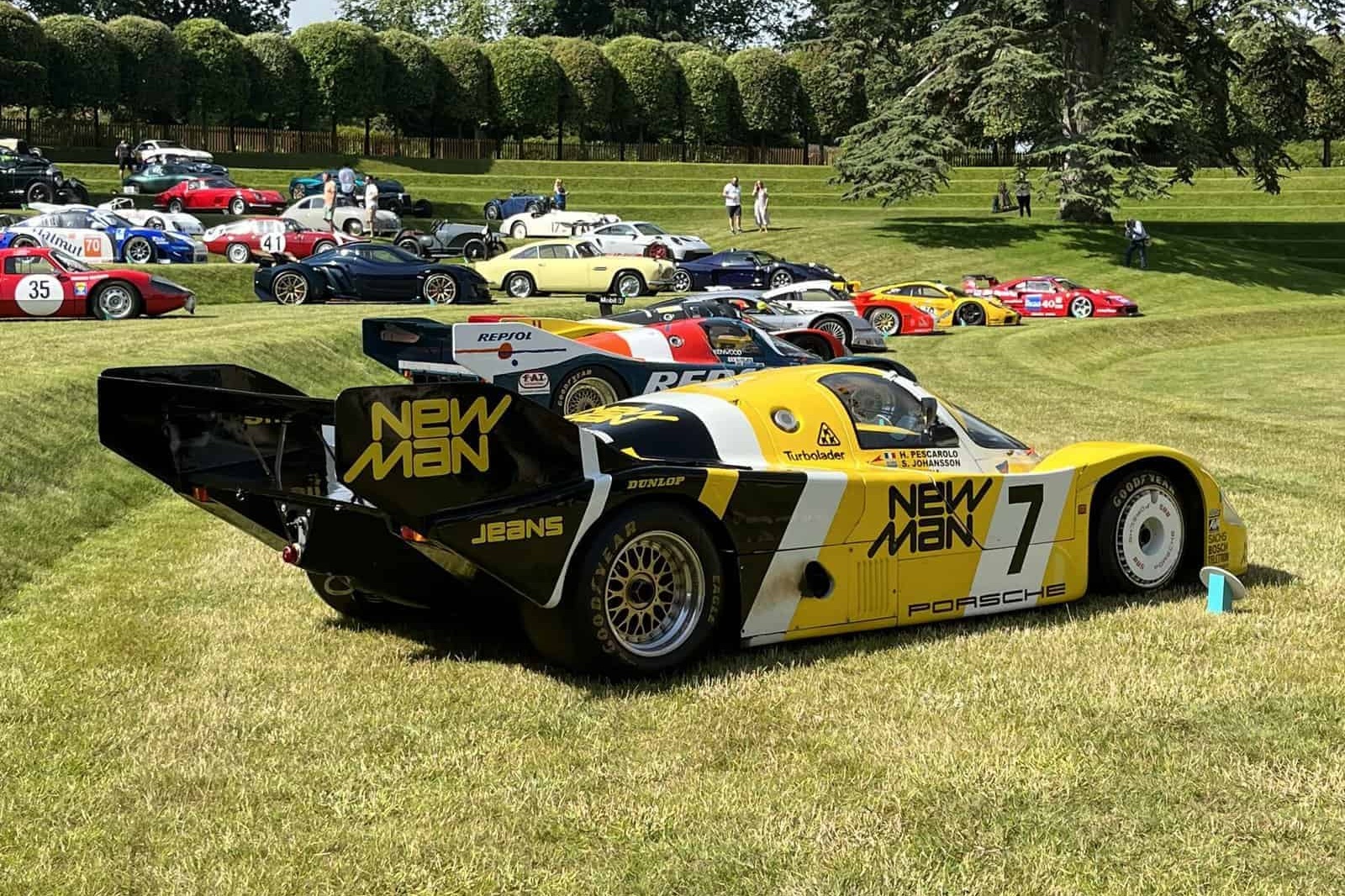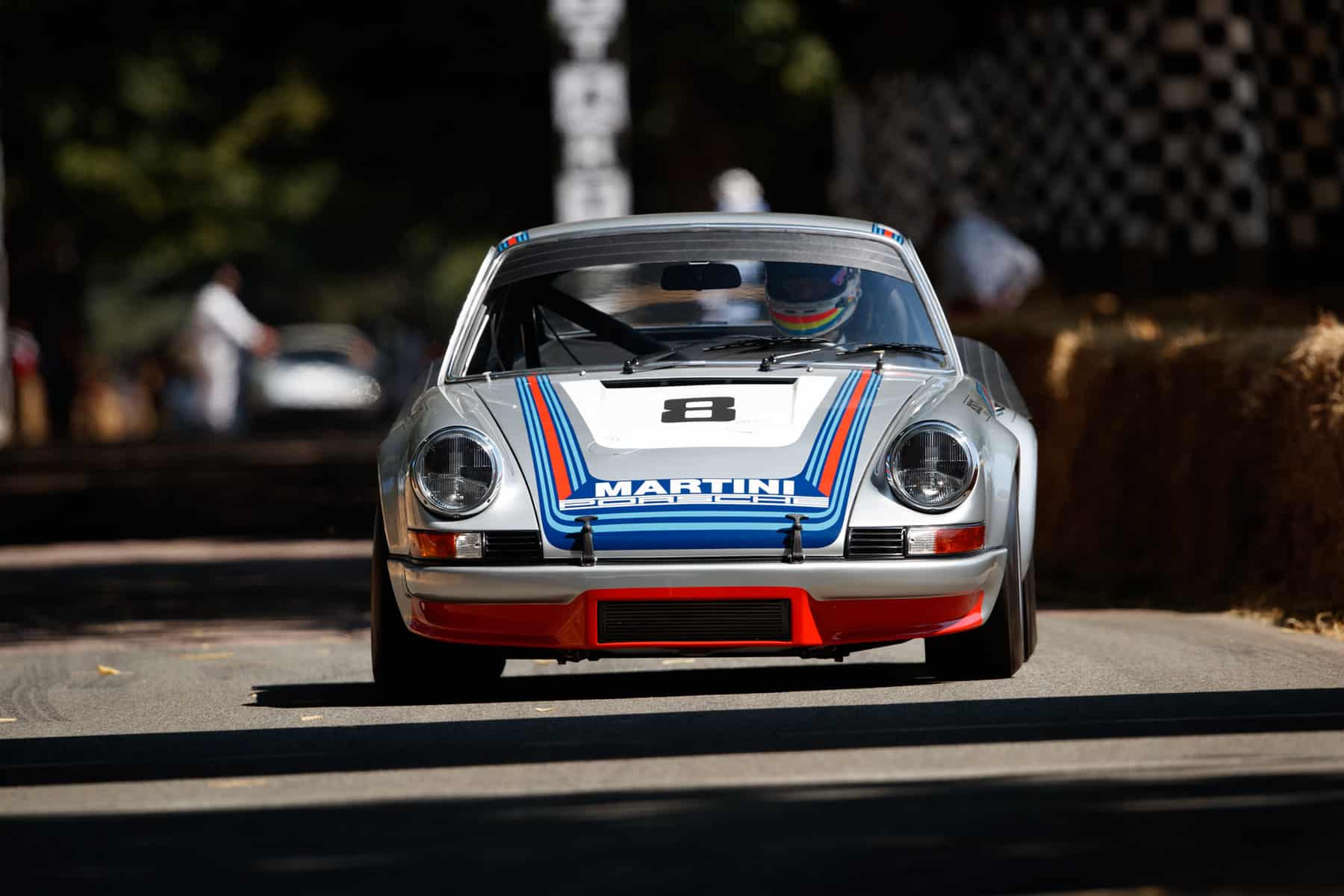George Eyston and his Thunderbolt
The story behind the most impressive land-speed record contender yet seen
BY: KARL LUDVIGSEN
PHOTOS: LUDVIGSEN PARTNERS
Captain George Edward Thomas Eyston was a towering figure in the motor sports of the inter-war years and afterward. Bespectacled, a big man like his speed rival John Cobb, Eyston was born on June 28, 1897, at Bampton in Oxfordshire. He studied engineering at Trinity College, Cambridge, before and after service with the Royal Field Artillery in WWI that brought him the Military Cross.
“Unlike many of the best brains in the race and records business,” wrote Dennis May, “Eyston wasn’t self-taught. He had a formal education in mechanical engineering at Cambridge. But nature equipped him with something that perhaps served him better than whole libraries of book learning ever could: a receptive mind, a venturesome angle of attack on technical problems and a readiness to heed and profit by the experience of others. In the company of people with even modest pretensions to engineering authority, or authority on any subject on earth for that matter, he had a characteristic way of listening absorbedly with his head tilted slightly to one side…and ‘not saying much.’”
After a start on motorcycles, Eyston began car racing seriously in the early 1920s with Bugattis and Aston-Martins. He was active in performance engineering, having thirty patents to his name, chiefly in the field of compressors and supercharging for which he established the Powerplus company. In the late 1920s Eyston teamed up with Ernest Eldridge, whose driving career suffered after he lost an eye in a crash at Montlhéry. Eldridge was a brilliant engineer who designed his own racing and record-breaking cars.
Eldridge pointed out to Eyston the financial benefits of record-breaking over racing. Record-breaking brought better publicity, he maintained, because records lasted longer and could be promoted longer. This, he added, was more attractive financially to makers of cars and components than successes in racing. As well, said Eldridge, record-breaking failures were less conspicuous. Thereafter Eyston engaged much more intensely in record attacks with Eldridge as his engineer-manager.
“Ernest was the last man to break the world’s land-speed record on an ordinary road,” said Eyston. “This was in France in 1924 with his 300-horsepower Fiat, aptly named Mephistopheles. His passenger on the attempt was named Gedge who, it was alleged, carried a bottle of whisky with him in the car. If the story is true, one could hardly blame him!
“Ernest used to tell me,” added Eyston, “how the French laid on about one thousand gendarmes to keep the road clear for his attempt and how his first record was nullified after a protest from a rival that Mephistopheles had no reverse gear! Always a man of enterprise and ingenuity, Ernest promptly equipped the car with additional driving sprockets to the rear wheels and a figure of eight chain, thus proving that the vehicle could be driven backwards if it had to!”
Eldridge was an important partner in the creation of Eyston’s Speed of the Wind, a highly ingenious and successful long-distance record-breaker. He acted as manager of Eyston’s campaigns at Bonneville, the second of which was in 1936. On his return to the UK Eldridge contracted pneumonia, which bedeviled him until his death in October 1937 at the age of just forty. Eldridge doubtless contributed ideas to the land-speed record-breaker that became Thunderbolt, but he was not its principal architect.
Although backed by Castrol, George Eyston was no Campbell or Cobb in the wealth stakes. But he was resourceful. As the builder of his car, he negotiated favorable terms with Beans Industries at Tipton in the West Midlands. Set up in 1933, this was the successor to the companies that made Bean automobiles from 1919 to 1929. Now making castings and forgings for the motor industry, Beans saw this job as a potential source of excellent publicity for its new mission.
Eyston admitted that his funds didn’t extend to the use of costly “aeronautical engineering methods.” His car would be heavy. This was a forgone conclusion from his decision to use a brace of Rolls-Royce R-Type engines, one of which had sufficed for Campbell to top 300 mph in 1935. Together these weighed 3,300 pounds and offered on the order of 5,000 propulsive horsepower.
Electing to drive the rear wheels only, Eyston placed his big V-12s side-by-side. Each engine had its own clutch, which was specially designed to engage a set of dogs to give a solid drive when relative speeds were fully equalized. A train of gears joined the two power units together. From these a central takeoff drove a contiguous three-speed transmission from which the drive went directly to the final-drive gears, with no differential. To cope with the available power and torque this machinery was of massive proportions.
As the weight promised to be high—in 1937 form it was 7 tons—Dunlop had to be consulted on the number of wheels and tires required. This came to a total of eight. Four of the 7.00 x 31 tires were at the two rear wheels, doubled up to give traction in the manner of Campbell’s last Blue Birds. At the front Eyston placed two pairs, the foremost being on a narrower track to suit the inward-tapering nose. Massive longerons from front to rear carried the engines, drive train, and parallel-wishbone independent suspension for all three pairs of wheels, complete with transverse multi-leaf springs. The four front wheels all steered.
A novel feature was braking by large clutch-type discs. One was at the extreme rear, driven by an extension of the pinion shaft, while the other was inboard at the front and turned by shafts and bevels from the rearmost set of wheels. Patented by Eyston and the Borg and Beck Company, each brake had eight hydraulic cylinders behind its pressure plate, retarding a single Ferodo-lined disc. As well the car’s flanks, at the extreme rear, carried two outward-swinging air brakes.
Nestling behind the rear pair of front wheels was the cockpit with its four-spoke wheel and twin tachometers. Behind it were the inboard exhausts of the two Rolls-Royces, which were manifolded to outlets above the rear deck. The outer banks exhausted to the sides as in the Supermarine aircraft that used one of them to win the Schneider Trophy. Air scoops athwart the cockpit collected the induction air the engines needed. In the nose was a conventional radiator whose warm air was ducted up and outward behind the nosepiece.
In its 1937 form the Thunderbolt’s air entry matched the octagonal shape of its radiator. Its cockpit was open with an aviation-style windscreen. A substantial triangular fin embellished its tail. Petrol and oil were carried in tanks of 40 gallons and 18 gallons capacity, respectively, the fuel being from BP with a dash of ethyl to suppress preignition. Fashioned of Birmabright, a corrosion-resistant aluminum alloy, Thunderbolt’s body had a full belly pan and offered removable panels for service access.
When Thunderbolt was turned loose at Bonneville in November 1937, she soon showed that her two engines were unhappy with being geared together. Heavy powertrain resonance was hard on the clutches as the first test runs indicated. Her first trip through the clocks showed potential to beat Campbell’s existing record of 301.129 mph with a speed of 309.6 mph. On the return run, however, clutch trouble developed before the measured mile was reached.
The car went back to its base at Wendover for a week of rectification. Returning to the Salt Lake area [?] to relieve the clutches of the strain imposed by getting the car underway, Eyston adopted what was then a novel idea. He deployed a motor coach to push Thunderbolt up to better than 40 mph. This worked for the northbound run, timed at 310.685 mph, but the return brought a recurrence of the clutch trouble. The repairs were too hasty, said the captain, so this time they would be done properly.
Doubtless with the guidance of locals who knew the scene, the clutches were sent to the Los Angeles workshop of Fred Offenhauser, inheritor of the legend of the great Harry Miller. Still on site was designer Leo Goossen, who had been at Miller’s elbow for decades. Goossen devised modifications to the clutches that were fashioned by Offenhauser’s skilled workmen.
Back at Bonneville, Thunderbolt was readied for another attempt. “It was an ugly monster,” said one onlooker, “severely purposeful from its blunt nose to its finned tail. Its thirty-five feet of length gave it somehow an unwieldy appearance. Indeed, some people openly declared that it was too heavy to be controlled at full speed. Others opined, with some justification, that it was not a car at all. Its seven tons, two engines, and eight wheels certainly removed it far from the sphere of ordinary motoring.”
Finally on November 19, 1937, with the salt in mediocre condition, the clutches worked well as Eyston shifted up to second at 100 mph and into top at 200. His two-way average of 311.42 mph was an improvement on Campbell’s record speed that justified the effort. However, said George, “The car is still in its experimental stage. We have learned a mighty lot, but we hope to learn a lot more about the many novel ideas incorporated in its design. Such knowledge can only be obtained at high speed.”
Into 1938 George Eyston captained a substantial overhaul of Thunderbolt. At all six corners lighter coil springs replaced the transverse leafs. This was one of the steps that slashed nearly a ton of weight from the big machine at a cost, said Eyston, of a dollar a pound. Its body was cleaned up with a shapelier nose and enclosed cockpit followed by a fairing, replacing the open original. Substantially larger air scoops for the engines enabled their 73 liters to swallow 200,000 liters of air per minute at maximum power. Adjusting the phasing of the two engines to change their combined firing order addressed the clutch and gear-train problems suffered in 1937.
His 1937 experience led Eyston to fit a Lockheed power booster to his braking system. Another novelty was a respirator mask and tank giving an air supply, a device he had used when setting records at Montlhéry in tiny claustrophobic MG Midgets. At Bonneville in 1938, wrote Dennis May, “the gas mask undoubtedly saved his life. First time out at around 260 miles per hour, the new brake servo did a square job on pedal-push multiplication and burned the linings to powder in half a mile.
“Located as they were,” added May, “approximately alongside Eyston’s shins, the brakes burped the resulting smoke and fumes directly into the cockpit through the pedal slots. Completely blinded but at least able to breathe, George steered by guess for interminable seconds. Thunderbolt veered right, into the clear. If it had gone the other way, chances are it would have collected one of its own replenishment depots where a score of mechanics stood frozen to their footprints in fear for the captain’s life.”
Eyston and his team arrived at Bonneville in mid-July of 1938 but were stymied by poor salt conditions. Only on August 24 was the captain able to make a fast run against the clocks. While his northward drive netted an excellent 347.155 mph, his return was nullified by a mysterious timing failure.
On August 27, in a partly black-painted Thunderbolt to be more obvious to the electric eyes, Eyston had another go. His times were 347.49 mph northward and 343.51 mph on the return for an average of 345.49 mph for the flying mile, a fraction faster than his flying kilometer and thus the new world land-speed record.
With John Cobb now taking the stage, Team Eyston was aware that it faced tough opposition from the new Railton-designed streamliner. They set about making such changes as they could in the facilities available at Wendover. One was easy enough: removing the tail fin in emulation of the Railton to reduce drag. The other was more complex, removing the radiator and substituting a large water tank behind a nose that was now completely covered by curved paneling.
In three weeks, Thunderbolt was made ready to respond when Cobb topped Eyston with a new record of 350.20 mph. On the next day, September 16, Eyston replied. “In the short time available,” Dennis May related, “it wasn’t possible to rig up ice tanks for the coolant to circulate through (a la Railton), an omission that led to George being almost casseroled alive.”
“We had not reached the measured distance,” wrote Eyston, “before the heat flow from the hot water in the nose became almost intolerable. I knew I would have to stick it out for quite a while but each second the heat intensified, roaring up like a blast from a furnace. I knew that there was little margin so that perhaps a couple of dozen joints in the water piping might spring a leak under the strain and a mass of boiling water pour out.”
“He used a slightly shorter route than on his previous bid,” said “Dunlop Mac” McDonald, “in order to place the least possible strain on his tires. His caution was praiseworthy but not necessary. In the wonderful weather and perfect conditions, he flashed across the salt at more than 356 mph. He came close to disaster, however, by over-running the safety mark and ploughing into the soggy salt well beyond the far depot. A truck was at hand to push him safely back to the starting line and George started again, after my inevitable wheel-changing chore. The mighty machine this time roared across the salt faster than ever at almost 359 mph. This gave Eyston a mean time of 357.50 mph over the measured mile.”
Following this successful new record sally, said Dennis May, “Eyston and his technicians had reason to believe, as a result of on-the-spot mods and George’s improving familiarity with the brute, that the car was already capable of considerably higher speeds than those officially clocked. These private tests, conducted after the departure of the timekeepers and other hitherto interested parties, were for the purpose of confirming paper calculations with a view to new attempts at a future date.
“Sure enough,” May added, “theory and practice were right in step. According to Bert Denly, who was first on the scene after the lamed monster had reeled and gyrated to a lopsided halt, Thunderbolt was making close to 400 mph when the anchorage of one of its rear-suspension wishbones broke, clenching the wheel against the chassis girder and locking it solid. Denly’s recollection of Eyston’s reaction is that ‘He didn’t say much.’ In crises, of which he had his fair share in seventeen years of speed on land and water, Eyston never did say much.”
This was the end of the line for Thunderbolt. Restored to rolling but not racing condition, she was unable to respond to John Cobb’s August 23, 1939, average of 368.85 mph in the Gilmore-sponsored Railton. On a tour of the Antipodes during the war she caught fire in New Zealand and was burned beyond salvation. George Eyston would go on to play an active role in record-breaking, including his support for Cobb’s 1952 attempt on the world water-speed record and his organization of MG records at Bonneville. He died in 1979 just short of his eighty-second birthday.
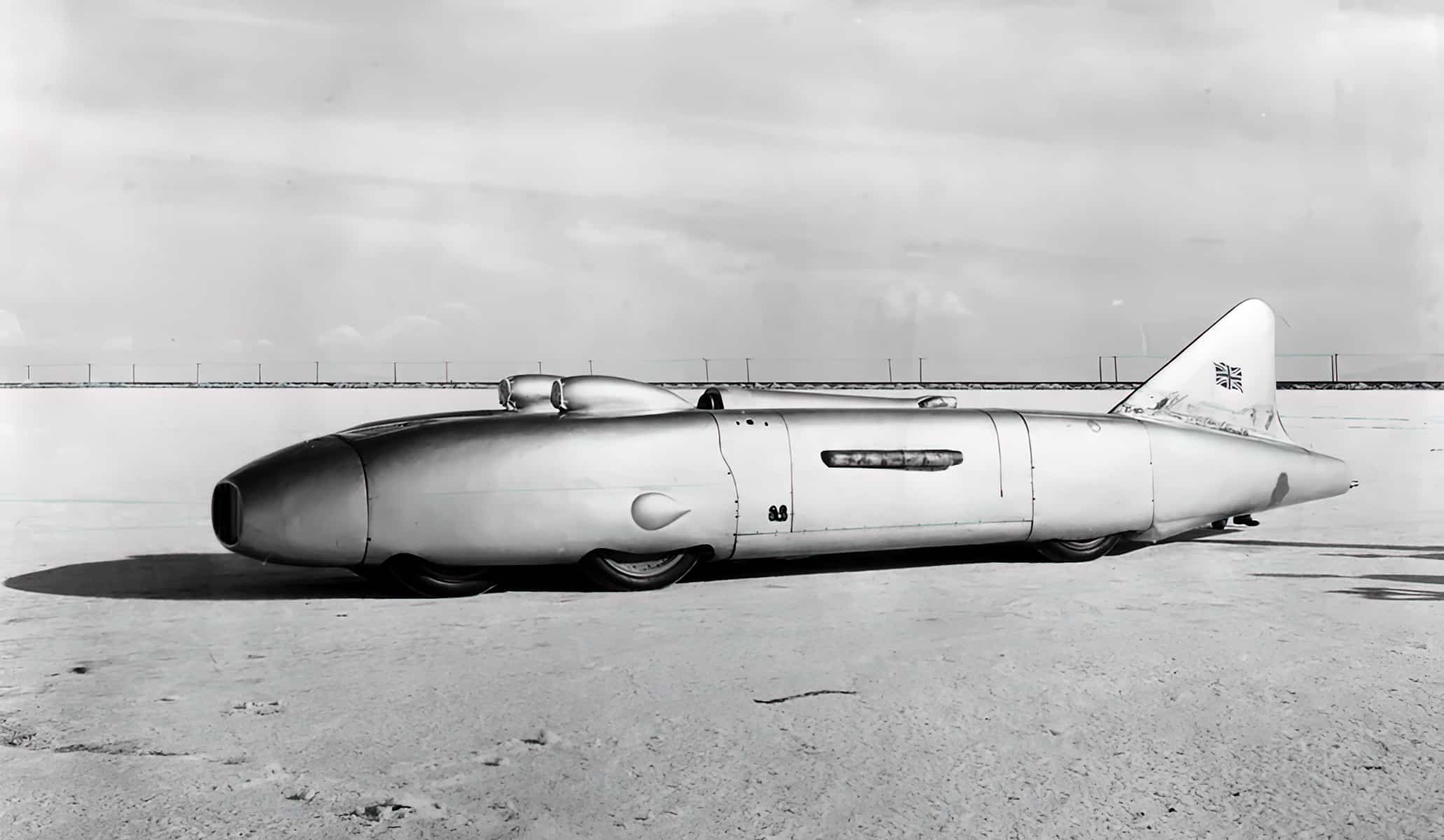

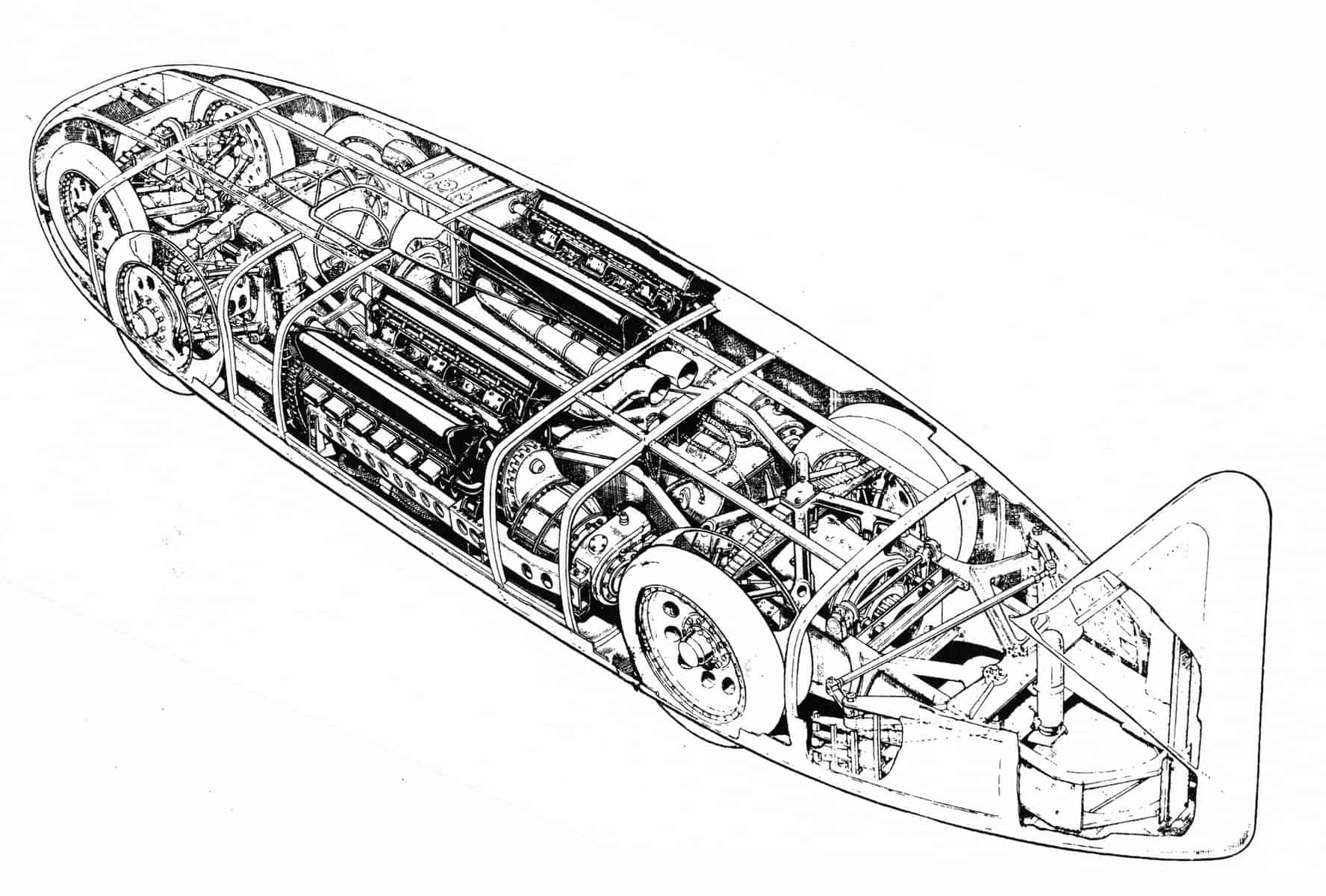
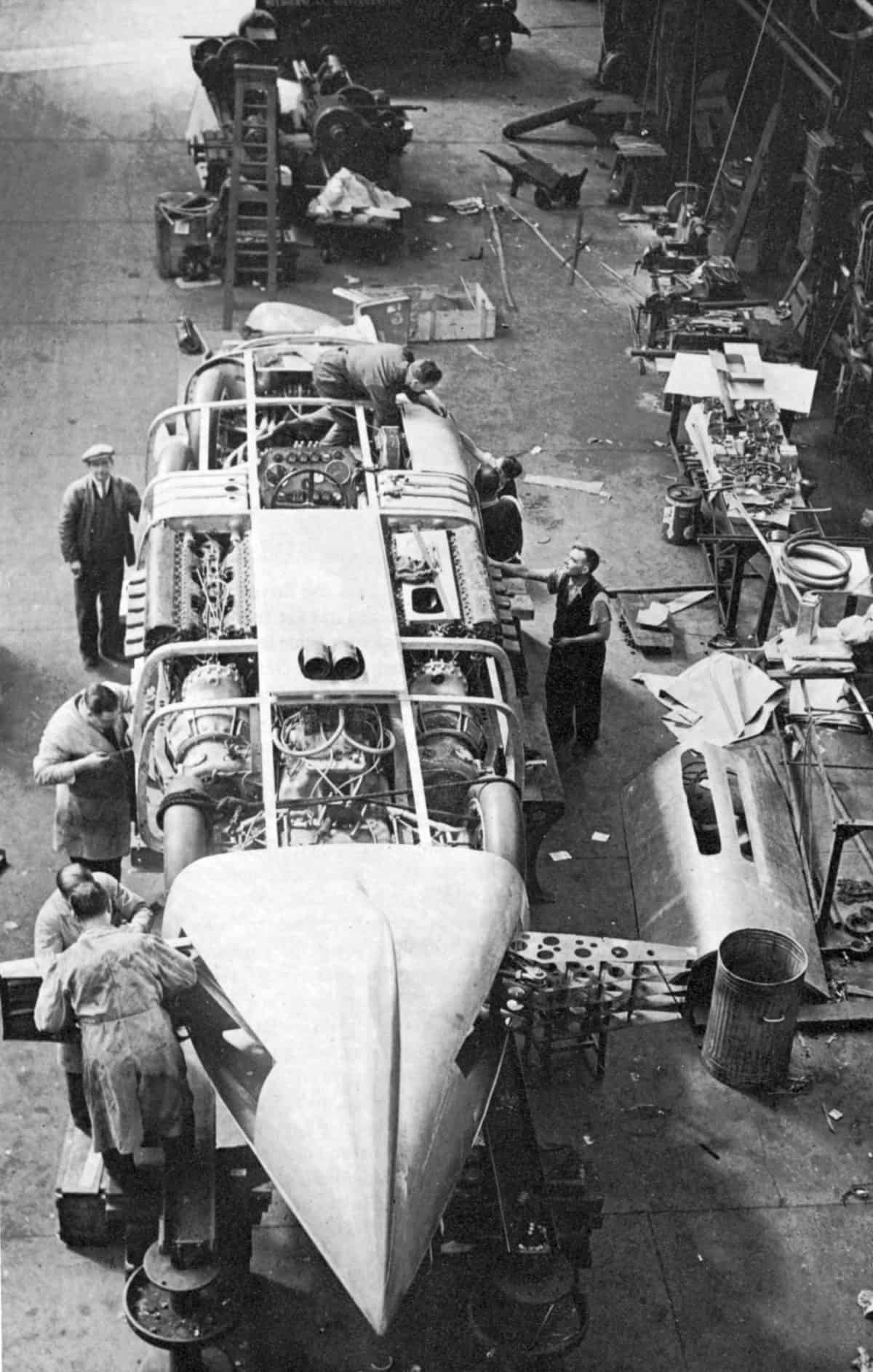
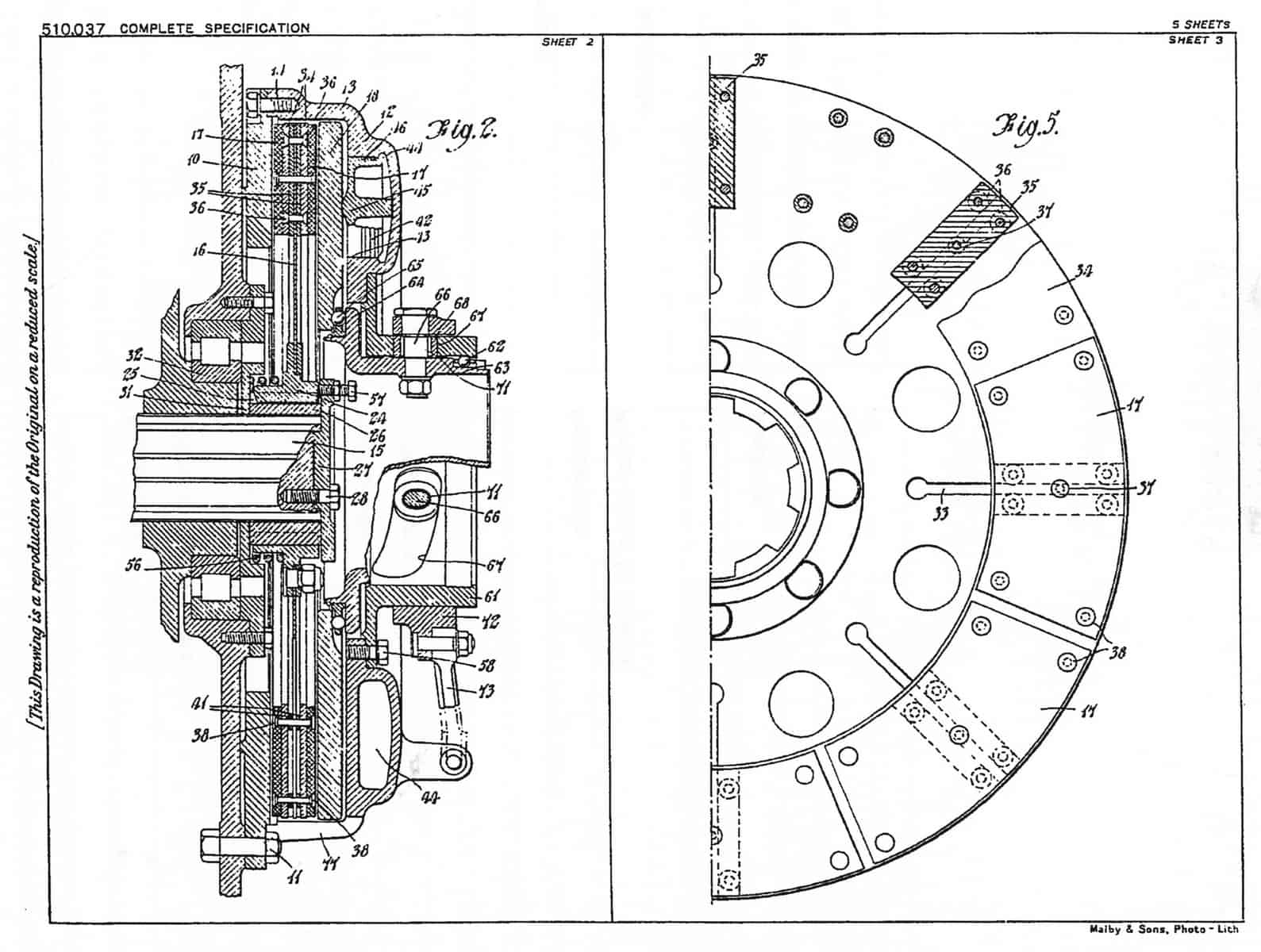

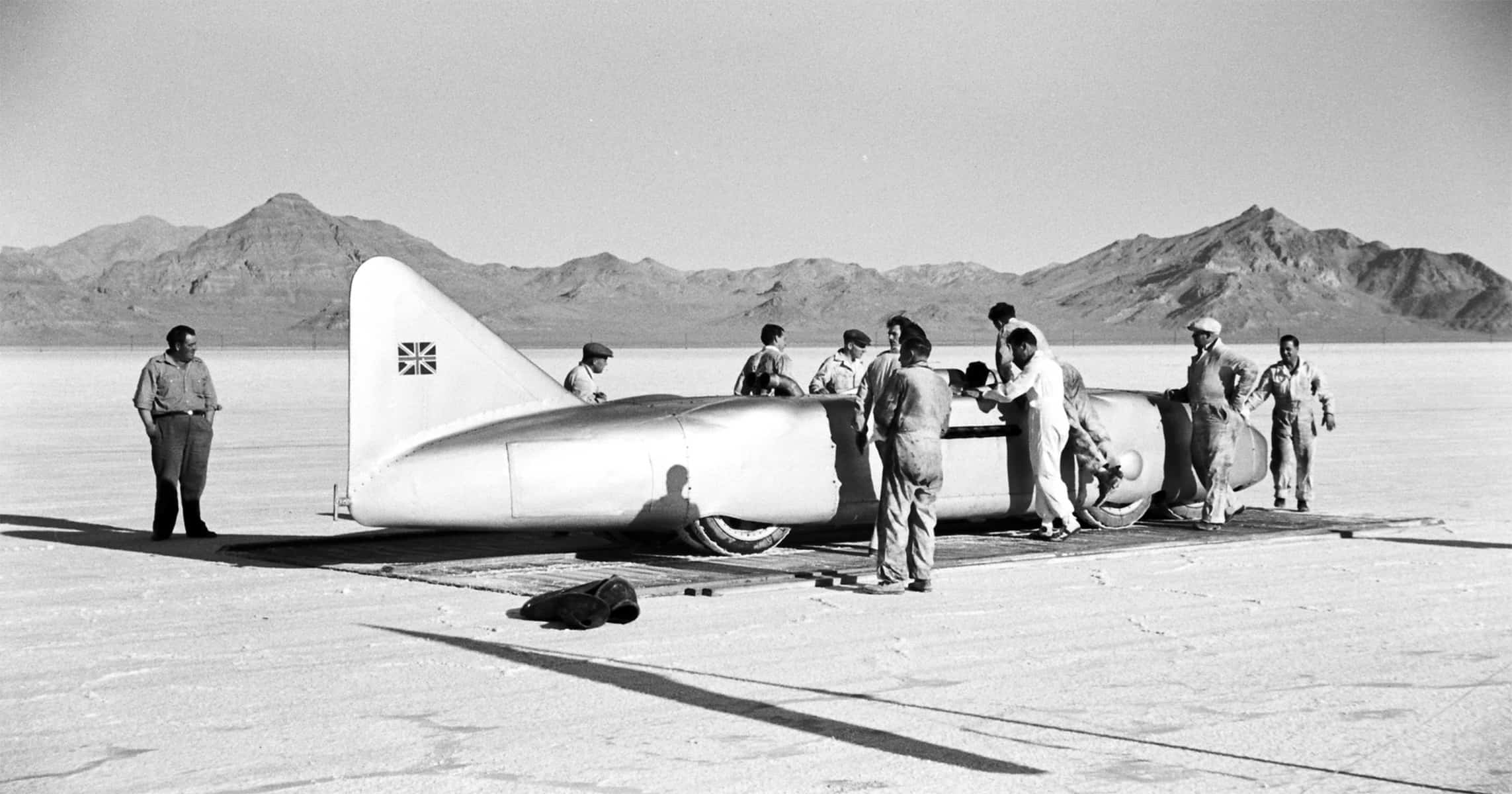
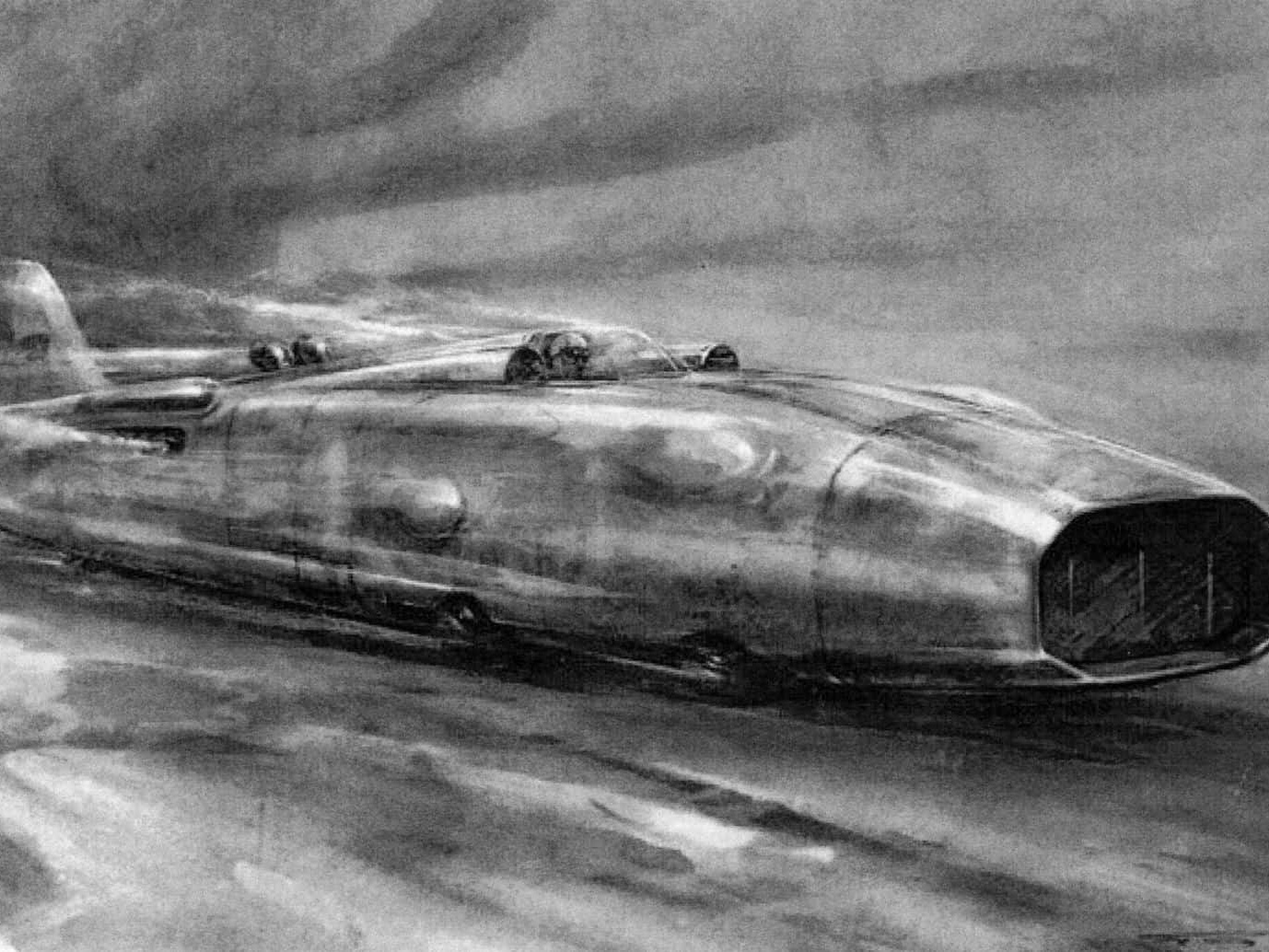
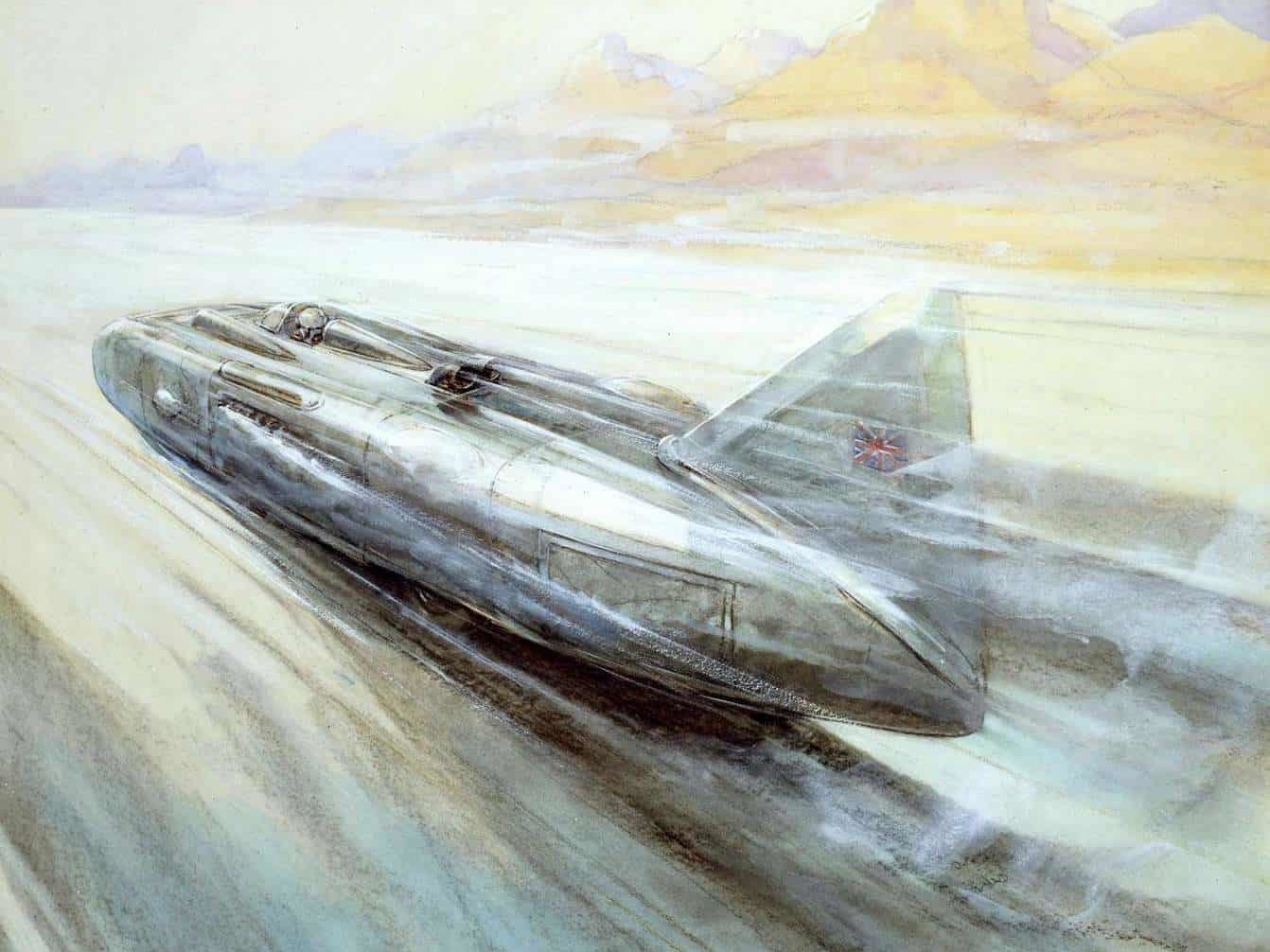
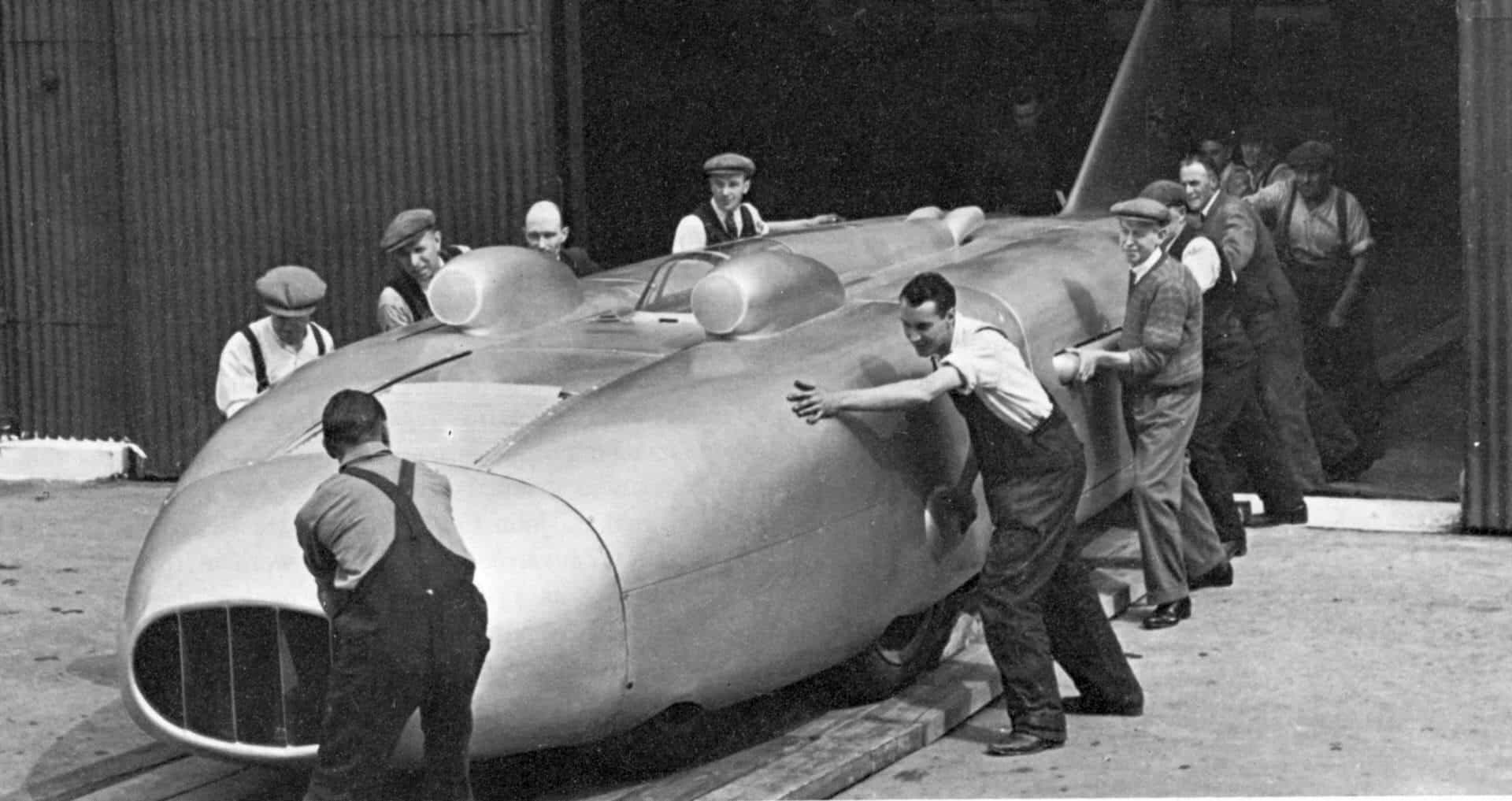



![alfa gtz perfectly imperfect webannerl[1]](https://automedia.revsinstitute.org/wp-content/uploads/2024/08/Alfa-GTZ-Perfectly-Imperfect-webannerl1-uai-1200x800.jpg)
